|
|
 |
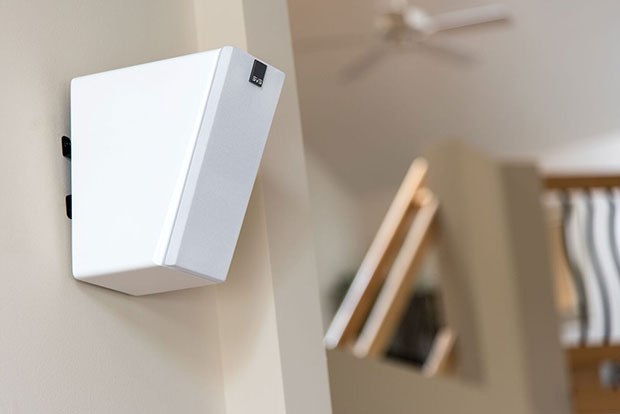
>> Tips from SVS on choosing immersive 3D surround sound “height channel” speakers for Dolby Atmos, DTS:X and Auro-3D.
Choosing the Best Dolby Atmos, DTS:X and Auro-3D Home Theater Speaker
Immersive sound formats like Dolby Atmos®, DTS:X® and Auro-3D® are pushing the boundaries of home theater speakers beyond a single plane of surround sound into the realm of overhead height effects to create the most realistic and convincing audio experience ever. Immersive sound forms a “dome” all around you and is experienced with ambient noise, like the chatter of voices at a crowded train station or rain falling from the sky, and for object based sound effects like a plane flying overhead or a bullet whizzing by.
With three different audio formats available, each with a unique approach, there has been some divergence in the terminology used. You will commonly see terms such as: upward firing speaker, object based surround sound, height effects speakers, height channel speakers, immersive 3D speakers, three-dimensional sound, immersive sound and others used when referring to Dolby Atmos, DTS:X and Auro-3D.
This article does not seek to define the differences between each format, or declare a winner, but rather to provide a guide on what to look for when choosing an immersive sound speaker, and to provide a rundown of solutions available from SVS.
To get started, you will need to own an AV receiver enabled with DTS:X and Dolby Atmos. Both are standard on most modern receivers sold in the U.S., while Auro-3D is still gaining adoption and more prevalent in Europe and Asia. You’ll also need, at minimum, a 5.1 or 5.0 surround sound speaker system (though it can have additional channels) and a Blu-ray player with Dolby TrueHD and DTS-HD Master Audio along with bitstream output, which are available on nearly all modern receivers. With this in place, you are ready to add speakers.
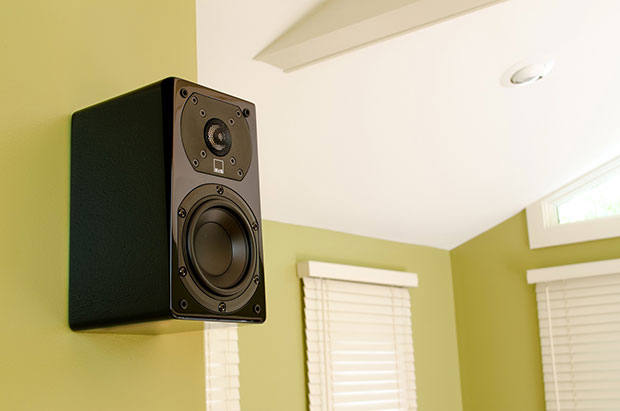
Design Options: Upward Firing, In-Ceiling and Direct Radiating Cabinet Speakers
Understanding the different types of home theater speakers available for immersive sound is the first step in narrowing your search.
- Upward Firing Speakers: The prevailing approach to Dolby Atmos enabled speakers relies on upward firing speaker modules being placed on top of floorstanding or bookshelf speakers and then beaming sound waves off the ceiling down to the listening area. There are also soundbars with a similar approach. The biggest issue with this is unpredictability because the listener’s perception of sound emanating from overhead and all around can be distorted because of room shape, ceiling design, seating location and other factors. It’s hard to get it right unless you have perfect conditions. It also requires limiting the frequency response of the speaker module so it can’t be full range. In contrast, DTS:X and Auro-3D have a more open approach to the speaker design and don’t require the upward firing approach.
- In-ceiling Speakers: Architectural in-ceiling speakers are a great option for height channel speakers when minimal visual impact is the priority. The main limitation with architectural speakers is in performance because they don’t have the benefit of a tuned cabinet to increase output and extend frequency response. On top of that, they require cutting holes and running wires through the ceiling which is a non-starter in many rental homes and can be expensive if a professional is needed for installation.
- Direct Radiating Cabinet Speakers: Direct radiating refers to a speaker that is mounted on the wall or ceiling and has the driver and tweeter angled towards the listening area. The biggest benefit of mounting a direct radiating cabinet speaker is that you can enjoy full range sound at reference output levels without the compromises of an upward firing or in-ceiling speaker. This means a more convincing and immersive sound experience to the widest listening area possible.
Sound Quality and Performance
When choosing the best home theater speaker for Dolby Atmos, DTS:X or Auro-3D, it’s smart to look for a full-range solution with neutral voicing and excellent dynamic range and reference output capabilities. The speaker should sound natural and play as loud as you like, without distortion, while blending seamlessly with other home theater surround sound speakers and subwoofers. While it won’t often handle dialogue, or be the only channel in use, a speaker with these qualities will let you identify the location and movement of sound with pinpoint accuracy and maximum impact making you feel like you are truly there.
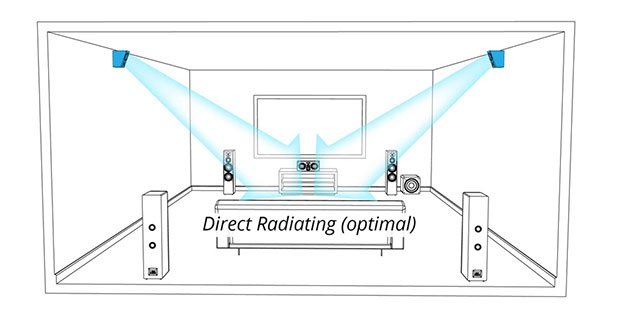
Placement of Dolby Atmos, DTS:X and Auro-3D Speakers
In most real-world home theater environments, you don’t have the luxury of precise placement. Exposed beams, cathedral ceilings, closets, hallways and other architectural features get in the way of perfect placement making you choose from the options available. With no constraints, it’s best to follow the recommended guidelines specified by Dolby Atmos, DTS:X and Auro-3D. If you are contending with an imperfect room, look for the best sounding speaker with the most versatile installation options possible.
For general placement guidelines, placing height channel speakers on the side walls, six to eight feet off the ground or directly overhead with the front baffle angled towards the listening area, are solid options. If mounted higher than that, you can raise the output levels of the height speakers on your AV receiver to ensure maximum acoustic impact.
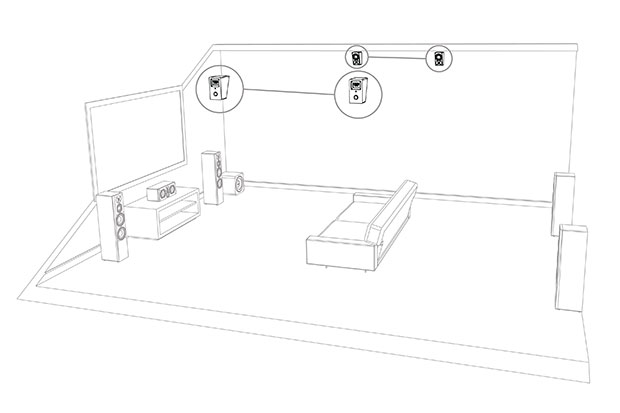
SVS Approach to Immersive 3D Audio Speakers
The SVS design philosophy for Dolby Atmos, DTS:X and Auro-3D speakers is rooted in optimal sound quality and versatility. The following SVS speakers are well-suited all home theater surround sound systems and room layouts.
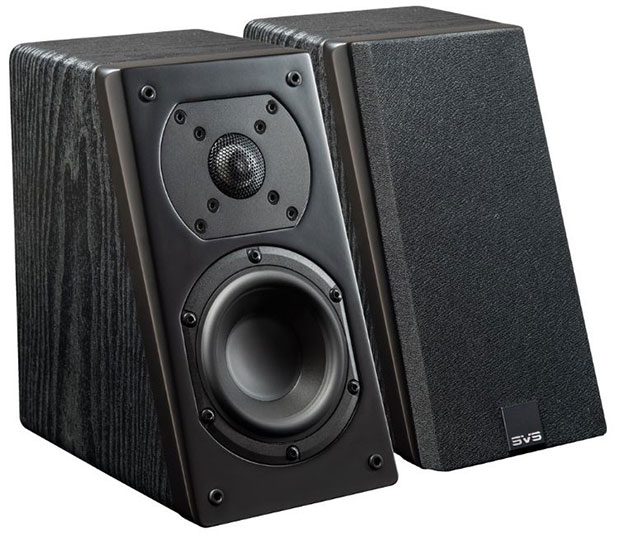
SVS Prime Elevation - High fidelity height channel speaker offers dynamics and refinement of a high-end bookshelf speaker and easily installs on walls or ceilings with included hardware.
- Angled front baffle enables direct radiating of sound towards the listening area with no unpredictable ceiling bounce.
- No frequency response limiting, recessed tweeters, upward firing drivers or other compromises of typical immersive sound speakers.
- Refined acoustics and full range dynamics make it ideal for all audio formats and room layouts
- Easily mounts on a front, side or back wall, or directly overhead on the ceiling for maximum placement versatility.
- Installation-friendly Multi-Angle Wall Bracket (patent pending) included.
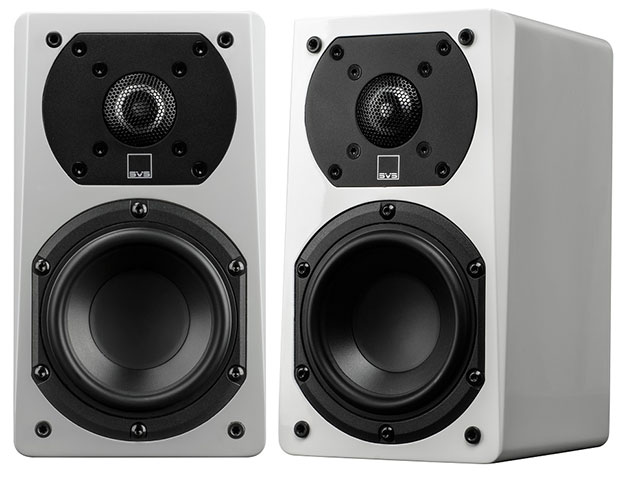
SVS Prime Satellite - Defies expectations with output and accuracy normally reserved for much larger speakers. Works with most ceiling and wall mounting brackets.
- Massive dynamic impact, superb tonal balance and exquisite build quality not previously available in a compact satellite speaker.
- Versatile placement options with keyhole wall bracket (included) that works with most pivoting wall and ceiling speaker mount brackets.
- Compact, décor-friendly design and premium finishes accentuate any room décor without taking over visually.
- Most affordable, highly immersive heights effects speaker available.
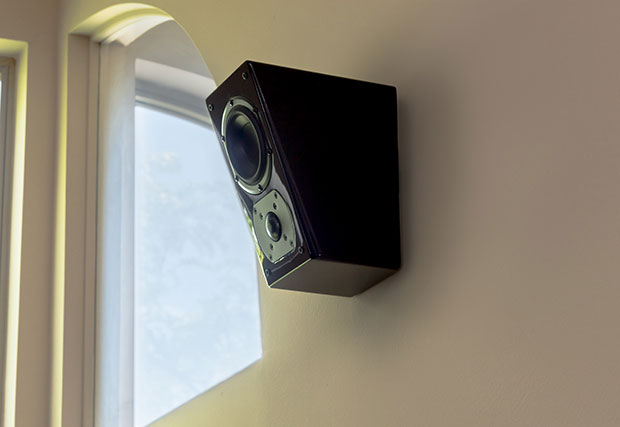
Immersive sound is one of the most exciting things to happen in home audio since the advent of 5.1 surround sound. Home theater experiences have never been more capable of transporting us into the middle of the action with convincing realism and if you’re considering a system upgrade; Dolby Atmos, DTS:X and Auro-3D speakers should be at the top of your list.
Go To: 4 Reasons to go with Dual (or more) Subwoofers >>
|






